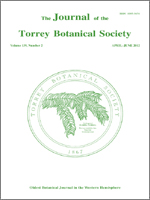Analyzing the spatial pattern of individuals within a plant community is useful for inferring the underlying mechanisms and processes governing community organization. Aggregated patterns can be caused by habitat-specificity or dispersal limitation, while overdispersed patterns are often caused by competition or predatory host-specificity. However, few studies have looked at how abiotic influences might drive spatial patterning. Here, we address how topography might lead to differences in tree spatial patterning on a north- and south-facing slope at Dysart Woods. We also look at how species identity, canopy position, and sampling year affect spatial patterning. We found that the spatial distribution of trees was highly aggregated on a south-facing plot, but did not differ from random on a north-facing plot. We attribute these differences largely to the differential dominance of Acer saccharum and Fagus grandifolia on the north and south plots, respectively. Acer saccharum individuals were largely randomly distributed, while Fagus grandifolia individuals were highly aggregated. We also found differences between understory and overstory individuals, with smaller individuals being more aggregated, likely due to life-history or competitive self-thinning processes. Lastly, we observed a surprising change in the scale that aggregation occurred at from 1996 to 2011 on the south plot. In 1996, stems on the south plot were aggregated at distances >3 meters, but only at distances >10 meters in 2011. We found that this reduction in aggregation was largely due to the unusually high mortality rates of Cornus florida and Prunus serotina. We conclude that topography can greatly influence spatial patterning, and that this and other abiotic variables should be taken into consideration in future studies on community structure.
How to translate text using browser tools
1 April 2012
Evidence for Topographic Control of Tree Spatial Patterning in an Old-growth, Mixed Mesophytic Forest in Southeastern Ohio, USA
Stephen J. Murphy,
Brian C. McCarthy
ACCESS THE FULL ARTICLE
Acer saccharum
Dogwood anthracnose disease
Dysart Woods
Fagus grandifolia
forest structure
old-growth
Ripley's K





